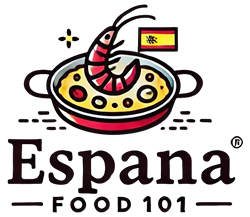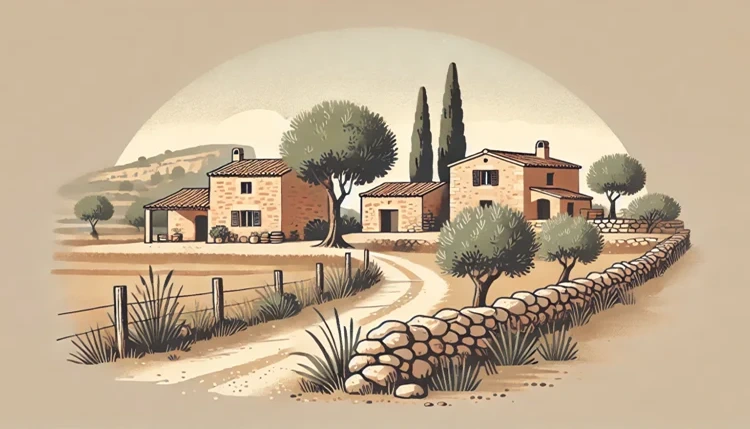When people think of Mallorca, the first images that often come to mind are its sandy beaches and bustling tourist spots. But beyond the coastline lies an entirely different side of the island—one filled with rural landscapes, quaint villages, and culinary treasures. Exploring Mallorca’s rural food trails offers travelers an authentic taste of traditional Balearic dishes, many of which have been perfected over centuries.
What Are Mallorca’s Rural Food Trails?
Mallorca’s rural food trails are a series of culinary routes that take you through the island’s more traditional areas. These routes often pass through rustic farms, local markets, and family-run eateries, where you can sample dishes made from locally sourced ingredients. The trails are designed to highlight the connection between the land, the people, and the food that has shaped Mallorca’s culture for generations.
Whether you’re a food lover or just curious about local customs, these trails offer an enriching experience. You’ll encounter dishes made from fresh vegetables grown in nearby fields, meat sourced from free-range livestock, and fish caught just off the coast. It’s an immersion in the agricultural and culinary traditions that make Mallorca unique.
What Dishes Can You Expect to Find?
The culinary offerings along Mallorca’s rural food trails are diverse and packed with flavor. Some of the most iconic dishes you’ll encounter include:
- Sobrasada – A cured sausage made from ground pork, spices, and paprika, typically spread on bread.
- Tumbet – A hearty vegetable dish made with layers of fried eggplant, peppers, potatoes, and tomato sauce.
- Pa amb oli – A simple yet flavorful snack of bread rubbed with garlic and tomato, drizzled with olive oil, and topped with ham or cheese.
- Frito Mallorquín – A dish featuring fried liver, potatoes, peppers, and fennel, often served as a tapa.
Why Should You Explore Rural Food Trails?
There’s something special about experiencing food in its place of origin, and Mallorca’s rural trails provide just that. These trails allow you to taste dishes that have been passed down through generations. They are an opportunity to engage with the locals, many of whom still cook using recipes that reflect the island’s rich history. Beyond the food itself, the rural trails offer an authentic connection to the island, one that goes beyond the typical tourist experience.
How to Plan Your Food Trail Adventure
Exploring Mallorca’s rural food trails can be done at your own pace. However, some trails are more structured and may be part of guided tours that include visits to local farms and markets. Here are a few tips for planning your food trail adventure:
- Decide on the region you want to explore. Popular areas include the Tramuntana Mountains and the central plains around towns like Sineu and Algaida.
- Look for local festivals or food markets happening during your visit. These events often feature traditional dishes and local ingredients.
- Consider staying at a rural finca (farmhouse), where you can immerse yourself in the slow-paced, agricultural lifestyle and enjoy home-cooked meals made from the farm’s produce.
What Makes Mallorca’s Local Ingredients So Special?
One of the standout features of Mallorca’s rural food trails is the quality of the ingredients. The island’s fertile soil, coupled with a Mediterranean climate, makes it perfect for growing a wide range of fruits, vegetables, and herbs. Many of the ingredients used in traditional Mallorcan dishes are sourced from within a few miles of where they are cooked. This ensures freshness and a unique flavor profile that is hard to replicate elsewhere.
For example, the olive oil used in many dishes comes from groves that have been cultivated for centuries. Local vineyards produce wines that complement the flavors of the region, and meats are often sourced from free-range livestock raised on the island.
Helpful Hint:
When exploring Mallorca’s food trails, don’t forget to visit a local olive oil mill. These mills often offer tastings and tours, giving you insight into the production process of this staple ingredient.
Are There Guided Tours for Mallorca’s Food Trails?
If you’re new to exploring rural food trails, consider joining a guided tour. These tours are usually led by locals who have deep knowledge of the island’s culinary traditions. They’ll take you to some of the best-kept secrets—family-run eateries, hidden markets, and artisan shops where you can sample everything from freshly baked bread to homemade cheeses.
Guided tours often include transportation, making it easier to visit multiple locations in one day without worrying about logistics. Plus, having a local guide means you’ll get an insider’s perspective on the history and significance of the food you’re tasting.
Stats:
According to a 2023 survey, over 60% of tourists visiting Mallorca expressed a strong interest in exploring local food culture, with many prioritizing rural food trails over traditional tourist attractions.
Conclusion: A Culinary Journey Through Mallorca’s Heart
Exploring Mallorca’s rural food trails for local dishes is not just about eating; it’s about connecting with the island’s rich history and traditions. From the farms to the markets and the family-owned restaurants, these trails provide an authentic and immersive experience. Whether you’re enjoying a plate of sobrasada or sipping locally produced wine, every bite brings you closer to the heart of Mallorca.
For those eager to escape the usual tourist routes, these food trails offer a different kind of adventure—one that satisfies both the stomach and the soul. As you venture into the island’s countryside, you’ll find that the true flavor of Mallorca lies in its rural landscapes and the people who call it home.
Exploring the Tramuntana Mountains: A Culinary Treasure Trove
Located in the northwest of Mallorca, the Tramuntana Mountains are not only known for their breathtaking scenery but also for their rich culinary traditions. This UNESCO World Heritage site is dotted with small villages, each offering unique local dishes that are deeply rooted in the mountainous terrain. As you travel through the Tramuntana, you’ll find that the food reflects the rugged yet fertile environment, with fresh produce and meats forming the backbone of the region’s cuisine.
What Makes the Tramuntana Region’s Food Unique?
The Tramuntana Mountains are home to a variety of unique ingredients, including mountain herbs, free-range lamb, and wild game. The cool, high-altitude climate allows for the production of special wines, cheeses, and meats, giving the region’s food its distinctive character.
One dish you must try here is Cabrito asado, a succulent roast goat typically served with potatoes and seasonal vegetables. Another popular option is Escaldums, a slow-cooked stew made with local meats and vegetables, which is perfect for cooler evenings in the mountains.
Helpful Hint:
When visiting the Tramuntana Mountains, make sure to stop by a local bodega (winery). The mountain climate produces unique grape varieties, and many wineries offer tastings of their special wines, paired with traditional Mallorcan snacks like pa amb oli.
Top Villages to Visit for Authentic Rural Cuisine
While the Tramuntana Mountains are filled with hidden culinary gems, there are a few standout villages where the food and local traditions truly shine. Here are some of the best spots to explore:
Valldemossa
Valldemossa is a picturesque mountain village known for its charming stone streets and lush green surroundings. One of the must-try dishes here is Coca de patata, a soft, sweet potato bun that pairs perfectly with a cup of Mallorcan coffee. The village is also famous for its almond products, so be sure to sample some almond cakes and pastries during your visit.
Deià
Known as a haven for artists and creatives, Deià is also home to some of the best rural food in the Tramuntana region. The village’s restaurants focus on locally sourced ingredients, and the seafood here is especially fresh, thanks to Deià’s proximity to the coast. Don’t miss the chance to try Lampuga, a type of fish caught in the nearby waters, often served grilled with olive oil and herbs.
Fornalutx
Tucked away in the mountains, Fornalutx is a tiny village that offers a peaceful retreat and some of the best food on the island. Here, you can enjoy traditional dishes like Arròs brut, a rich rice dish cooked with meat and vegetables, often flavored with local spices. The village is also a great place to sample fresh citrus fruits, as the surrounding area is known for its lemon and orange groves.
Top Local Dishes to Try on Mallorca’s Rural Food Trails
| Dish | Description | Where to Try It |
|---|---|---|
| Sobrasada | A cured sausage made from pork and paprika, often spread on bread. | Throughout rural Mallorca, especially in Sineu and Campos. |
| Tumbet | A vegetable dish with layers of fried eggplant, potatoes, and tomatoes. | Found in local eateries, especially in the Tramuntana region. |
| Pa amb oli | Traditional bread with olive oil, garlic, and tomato, often served with ham or cheese. | Available in most villages; popular in Valldemossa and Deià. |
| Arròs brut | A hearty rice dish made with meats and vegetables, flavored with local spices. | Best found in Fornalutx and the central plains. |
| Cabrito asado | Roast goat served with potatoes and seasonal vegetables. | Tramuntana mountain villages like Sóller and Deià. |
Local Markets: A Taste of Mallorca’s Freshest Ingredients
No food trail in Mallorca is complete without a visit to one of its vibrant local markets. These markets are not only a place to buy fresh produce, but they also serve as gathering spots where locals come together to share stories and traditions. Many of the dishes you’ll try on the food trails are made from ingredients found at these markets, giving you a direct connection to the island’s agricultural roots.
What to Look For at Local Markets?
Each market in Mallorca has its own specialties, but there are a few items that stand out no matter where you go:
- Olive oil – Often sold in artisanal bottles, Mallorcan olive oil is a staple in local cooking.
- Cheeses – From soft goat cheese to aged varieties, the island’s cheeses are a must-try.
- Fruits and vegetables – Depending on the season, you’ll find everything from citrus fruits to almonds and peppers.
- Herbs and spices – Locally grown rosemary, thyme, and saffron are commonly used in many dishes.
Seasonal Delights: When to Visit for the Best Food Experiences
Mallorca’s food trails are enjoyable year-round, but certain seasons offer special culinary experiences that you won’t want to miss. From harvest festivals to seasonal produce, the time of year can greatly influence what’s available on your plate.
Spring
Spring is a wonderful time to explore Mallorca’s rural food trails. The fields are lush, and the markets are filled with fresh vegetables like artichokes, asparagus, and peas. It’s also the season for lamb, which features heavily in local dishes like Cabrito asado.
Summer
Summer brings a bounty of fresh fruits, including apricots, melons, and figs. This is also the time when tomatoes are at their peak, making it perfect for enjoying dishes like Pa amb oli and Tumbet. Additionally, seafood is abundant in the summer months, with many coastal villages offering fresh catches daily.
Autumn
Autumn is harvest season, making it a great time to visit local markets. You’ll find a wide range of produce, from pumpkins and squash to grapes and almonds. This is also the season for game meats, which are often featured in hearty stews and roasts.
Winter
While winter may be quieter in terms of tourism, it’s an excellent time to explore the island’s food trails without the crowds. The cooler weather is perfect for indulging in heavier, warming dishes like stews and roasted meats. It’s also the season for citrus fruits, and many markets will be filled with oranges, lemons, and mandarins.
The Importance of Supporting Local Producers
When you explore Mallorca’s rural food trails, you’re not just enjoying delicious meals—you’re also supporting local farmers, artisans, and small business owners who have kept these traditions alive for generations. Many of the ingredients used in rural Mallorcan cuisine are grown and harvested by families who have worked the land for decades.
By choosing to eat at small, family-run establishments and buying from local markets, you help sustain these communities. Plus, it allows you to experience food in a way that’s much more connected to the land and the people of Mallorca.
Pros and Cons of Exploring Mallorca’s Rural Food Trails
Pros
- Authentic experience of Mallorcan culture and cuisine, away from touristy areas.
- Opportunity to discover traditional dishes made with fresh, locally sourced ingredients.
- Support for small, local businesses and family-run farms.
- Beautiful scenic routes through Mallorca’s countryside and villages.
- Chance to explore Mallorca’s culinary heritage through guided tours and local knowledge.
Cons
- Rural areas can be harder to access without a car or guide.
- Some trails may not have English-speaking staff, making communication difficult.
- Limited dining hours in more remote villages can restrict meal availability.
- Weather conditions, particularly in summer, can make long outdoor journeys uncomfortable.
- Less variety of vegetarian or vegan options on some rural trails.
FAQs
Wrapping Up
Exploring Mallorca’s rural food trails offers a truly authentic experience that connects you with the island’s culinary traditions and local culture. From the rich flavors of Sobrasada to the fresh, simple delights of Pa amb oli, every dish tells a story of Mallorca’s agricultural heritage and the people who have passed down these recipes through generations.
Whether you’re navigating the scenic Tramuntana Mountains or sampling freshly made dishes at a local market, the rural food trails allow you to immerse yourself in a side of Mallorca that many tourists miss. By supporting local producers and family-run eateries, you’re not just enjoying good food—you’re contributing to the preservation of traditions that have shaped the island for centuries.
If you’re ready to venture off the beaten path, Mallorca’s rural food trails are the perfect way to satisfy your appetite for both adventure and incredible local cuisine.







